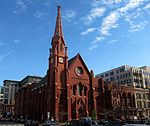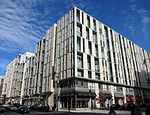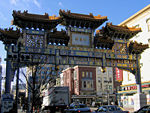United States Mint
1792 establishments in the United StatesArch Street (Philadelphia)Bullion dealersMints (currency)United States Mint

The United States Mint is a bureau of the Department of the Treasury responsible for producing coinage for the United States to conduct its trade and commerce, as well as controlling the movement of bullion. The U.S. Mint is one of two U.S. agencies that produce money in the case of minting coinage; the other is the Bureau of Engraving and Printing, which prints paper currency. The first United States Mint was created in Philadelphia in 1792, and soon joined by other centers, whose coins were identified by their own mint marks. There are currently four active coin-producing mints: Philadelphia, Denver, San Francisco, and West Point.
Excerpt from the Wikipedia article United States Mint (License: CC BY-SA 3.0, Authors, Images).United States Mint
9th Street NW Cycletrack, Washington
Geographical coordinates (GPS) Address Nearby Places Show on map
Geographical coordinates (GPS)
| Latitude | Longitude |
|---|---|
| N 38.900277777778 ° | E -77.023611111111 ° |
Address
9th Street NW Cycletrack 800
20220 Washington
District of Columbia, United States
Open on Google Maps










